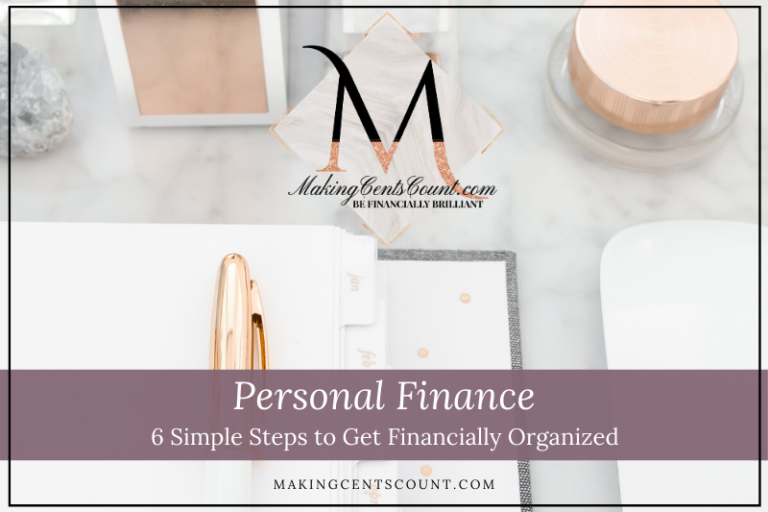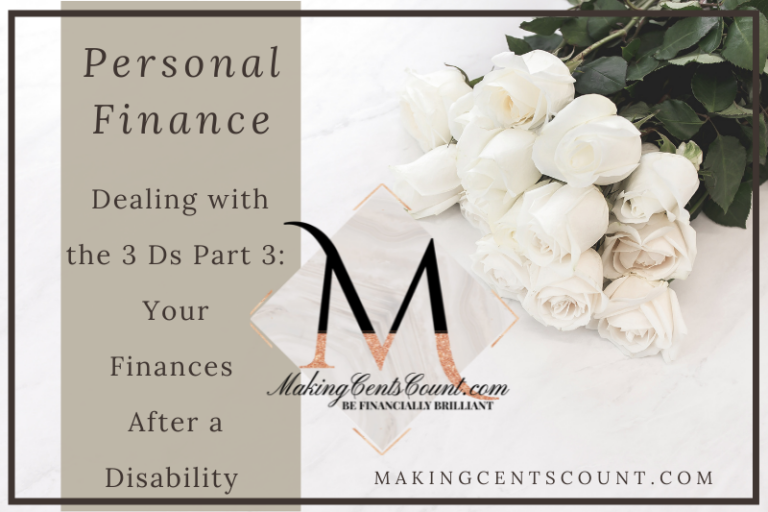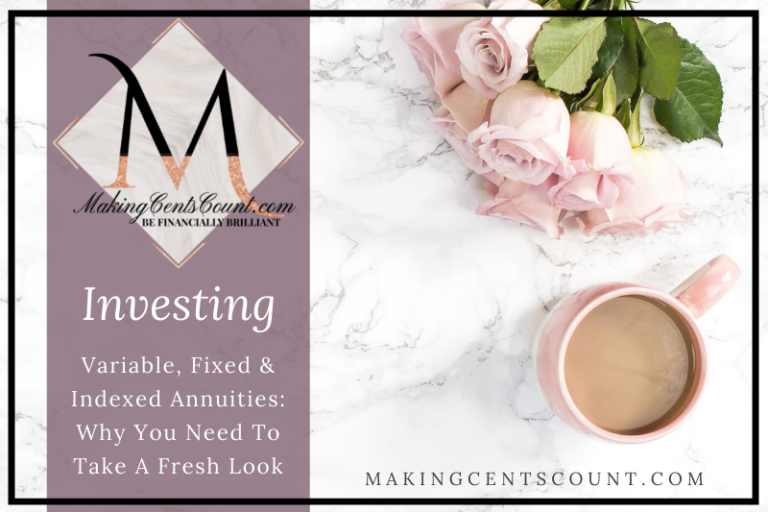Rock The Budget You Need: 4 Simple Steps To Start Living On A Budget
Estimated reading time: 10 minutes
I totally geek out when it comes to preparing a budget and seeing the numbers come together. I’m even happier when the numbers actually end up less-than I projected; leaving me with even more money to play with! Stay-tuned and learn to rock the budget you need in 4 simple steps to start living on a budget!
Admittedly, I’m a risk-taker when it comes to investing and, well, life in general. But when it comes to “extra” money in my cash accounts, I’m the complete opposite. Trust me when I say this: this wasn’t the case for a very long time. Living on a budget wasn’t easy until I figured out how to get my head in the game.
Table of Contents
Are you ready to start investing, control your finances, and prepare for retirement? Join our amazing community! You’ll receive exclusive financial tips from Making Cents Count, as well as unlimited FREE access to our resource library full of money-saving tools and guides.
Do you check your account and wonder where your money went after each paycheck? What do you do? How are you going to cover your bills, food, and necessities?
If this is the case, it’s time to look at putting a budget together—and I promise, it won’t hurt a bit!
The Hardest Part of Living on a Budget: Where to Start
So, you’ve decided to start living on a budget! Great — but where do you start?! Since you’ve decided to proceed with creating this “budget thing,” you’d better start now before the mood passes.
This completely mirrors what my sentiments were about creating a budget! I would think of any excuse I could to avoid the creation of this “masterpiece,” such as:
- I don’t really need a budget.
- I should really “carve” out a significant block of time during the day — or even the weekend — to create it. After all, a masterpiece does take time (insert rolling eyes here).
- And the doozy: I’ll wait until the 1st of the month to start. The slate will be clean and my circumstances will have (magically) improved by then.
What was ultimately holding me back, and why I wanted to avoid creating a budget altogether was simple. Creating a budget forced me to face the truth of how much money I spent, and on what! Ouch!
Why Creating a Budget Feels Scary
Truthfully, it was a little (okay, very) scary for me to buckle down and face my finances. It’s one thing to blow smoke at those around you, it’s an entirely different story when you get (brutally) honest with yourself.
Like many Americans, I liked the “idea” of living on a budget but I wasn’t sure about the reality. Thinking about creating a budget, versus actually creating a budget entails more than going-through-the-motions; it requires a change in your mindset.
Sometimes (okay, almost always), change is a tough one to tackle for one big reason: embarrassment! I GET this! Part of your monthly expenses may include several not-so-little debts (like that high-interest credit card). And, sometimes, thinking about debt is overwhelming at best, and mortifying at worst.
Why Budgeting is Tough to Tackle
Truth-be-told, I’ve had debt — and I’m talking a lot of debt, both personally as well as professionally. I was determined to get out from under that burden. It was tough and it was embarrassing. But I also reached a point where I didn’t care what I had to do (or give up) or how long it took. I had to get brutally honest with myself and to commit fully. I gave myself a timeframe of when I would see the light at the end of the tunnel. and started making a dent in my debt.
I had plenty to show for my debt, but my future looked uncertain. I knew my debt wasn’t there because I didn’t like pretty things, because clearly, I did — and still do. But since I almost always bought the pretty thing, those results clearly showed in my debt. I had to start living on a budget.
So, if you’re in a similar situation, it’s time to stop avoiding and to stop being embarrassed. Here are the 4 steps to living on a budget and getting your finances under control!
1. Block Out Time
Every realistic goal (including financial goals) are time-bound. This means creating time NOW to start budgeting. It also means setting up a timeline for tackling your goals.
When I started living on a budget, I gave myself a specific timeframe for each liability I wanted to conquer. I tackled this by targeting a particular debt and either reducing it (again, by a specific timeframe) or paying it off completely. Once I had crushed one debt, I was on to the next liability.
Do you see how my mindset had to change if I wanted my situation to change? It certainly wasn’t easy, and yes, living on a budget (really) sucked at first, but it got easier as time went on. Eventually, I finally achieved my goal of being debt-free, and I built a nice cash cushion along the way. And yet, I still create and live by a budget to this day.
Here’s the deal: you can’t live your life thinking you will forever dwell in “deprivation mode.” Because if you do, you won’t bother taking the time to start. And believe me, by breaking your biggest goals down into smaller, more manageable bites, you will get there. There is a light at the end of the tunnel, even if you can’t see it yet.
2. Find the Right Resources
If you’re ready to create a budget but aren’t too sure where to start, check out my post on breaking down your finances, where you will find a very comprehensive Monthly Budget Workbook. This workbook covers every possible expense, and is a helpful starting point for putting you on the right track. It’s also FREE!
If you prefer using Excel versus pen to paper then snag our all-inclusive financial spreadsheet! Our Monthly Budget Workbook Template is available for purchase, and will give you the jumpstart you need on your journey to financial success.
It may not seem significant to you, but the fact you’re starting to budget is a huge step! To put your mind at ease, there are many ways to create a budget. I don’t want you to think there’s only one-way or no-way at all. What I’m doing is providing a starting point because, ultimately, whatever you end up using as a tool for budgeting, needs to work for you in the long-term.
Useful Budgeting Tools for Living on a Budget
When initially setting up my monthly budget, I started with a good ol’ notepad. I jot down all sorts of changes, complete with scribbling, scratch-outs, arrows, and so on. The draft of my budget is never pretty, and it doesn’t need to be. It just needs to make sense to me so that it works.
The point is to just start. Jot down the dates of money coming in, and times of expenses going out. Maybe throw in current balances due before finalizing the numbers and transferring them over to the Monthly Budget Workbook. Of course, you can modify your budget any way you want, but at least this gives you a quick guideline to use as a reference.
3. Write Down Income and Expenses
When I set up my budget, I set aside some time (not a whole weekend, of course, but maybe 30-60 minutes).
First, I write down the date and amount of money I expect to come in for the month. What you take home is called your ‘net’ pay. So, if you get paid twice a month, let’s say on the 1st and the 15th, split your page in half, and indicate the actual dollar amount next to each of those dates.
Next, I write down all of my monthly expenses and I designate a number next to each expense in the order of importance to me. The reason I do this is really quite simple. When I’m looking back over my budget from the previous quarter, I can quickly see if there’s an expense I’m missing. Meaning, by examining the number associated with the expense. The number sequence will most likely change as expenses are alleviated.
When Living on a Budget Changes
Depending on what stage you are in your life, monthly expenses are different and will likely change over time. To give you an example, since my daughters are grown, I don’t have any daycare costs. And, since I work remotely, my fuel costs are minimal. Your budget might look different, but to create a budget snapshot, you need to see money-in and money-out.
Also, if you pay any of your expenses annually, it will have a positive effect by adding to your monthly discretionary income. It could also lessen the overall cost because interest charges for carrying a balance are eliminated. Lastly, of course, you must keep in mind that expenses will vary according to where you live.
4. Pay Down your Debts One-by-One
You will see that by keeping your format simple, it’s easy to track your budget as well as your ongoing progress. By taking a portion of your discretionary income and paying your bills off one-by-one, you’ll find it becomes a game. I say this because you’ll want to see how fast you can pay off your next bill, and then the next; otherwise known as the debt snowball effect.
If you’re living on a budget but you don’t have any discretionary income at the end of the month, it’s time to consider a different action. Either reduce your expenses (phone, cable, deductibles on your auto and home insurance, etc.) or look into a legitimate side-hustle for additional income. I emphasize “legitimate” because there are many that are not.
Once you’ve committed to getting your finances under control, you will see progress quickly. Build on each “win” and use that momentum to keep you on track. Living on a budget doesn’t mean misery and frustration. It actually gives you financial freedom in the long-term.
How to Create Your Budgeting Masterpiece
I’m confident after you’ve created your masterpiece and you start seeing the results, you will want to keep living on a budget without any hesitation.
If working on your finances is one of your goals right now (or, maybe it’s been a goal for some time), I suggest starting with the Making Cents Count Financial Organizer.
Our financial organizer is the robust answer you need. The organizer is our DIY financial services option, providing you with the tools to eliminate financial overwhelm.
In the exclusive Making Cents Count Financial Organizer, you’ll get:
- Clear strategies to get your finances under control
- Processes to organize and streamline your investments
- Guidance to track your legal documents, tax information, and permanent records
- Markers to know when you should meet with an attorney to establish a will or trust
- Templates, checklists, and step-by-step actions
- Insights on the financial-must haves to build a secure future
- Detailed How-To Guide for optimal results
If you want financial confidence, grab the Financial Organizer, and get results that fit *your* lifestyle!
Making Cents Count Financial Organizer
Once you get your budget rolling, check out my post on 6 Simple Steps to Get Financially Organized. This post also includes a helpful checklist available in my Resource Library (free to access).
Admittedly, this particular checklist has a larger-scale focus on your overall financial picture, but I genuinely feel that getting your finances organized is essential.
I’m so excited to invite you to join our Financial Success Society Waitlist! Our enrollment opens soon (so don’t miss a chance to get on the notification list). Your journey to financial success is unique and with this exclusive membership, you’ll receive the guidance you desire, enabling you to move financially forward, no matter where you are in your financial journey. At Making Cents Count, we offer an array of outstanding products and services to help you get control of your finances so they won’t control you!







